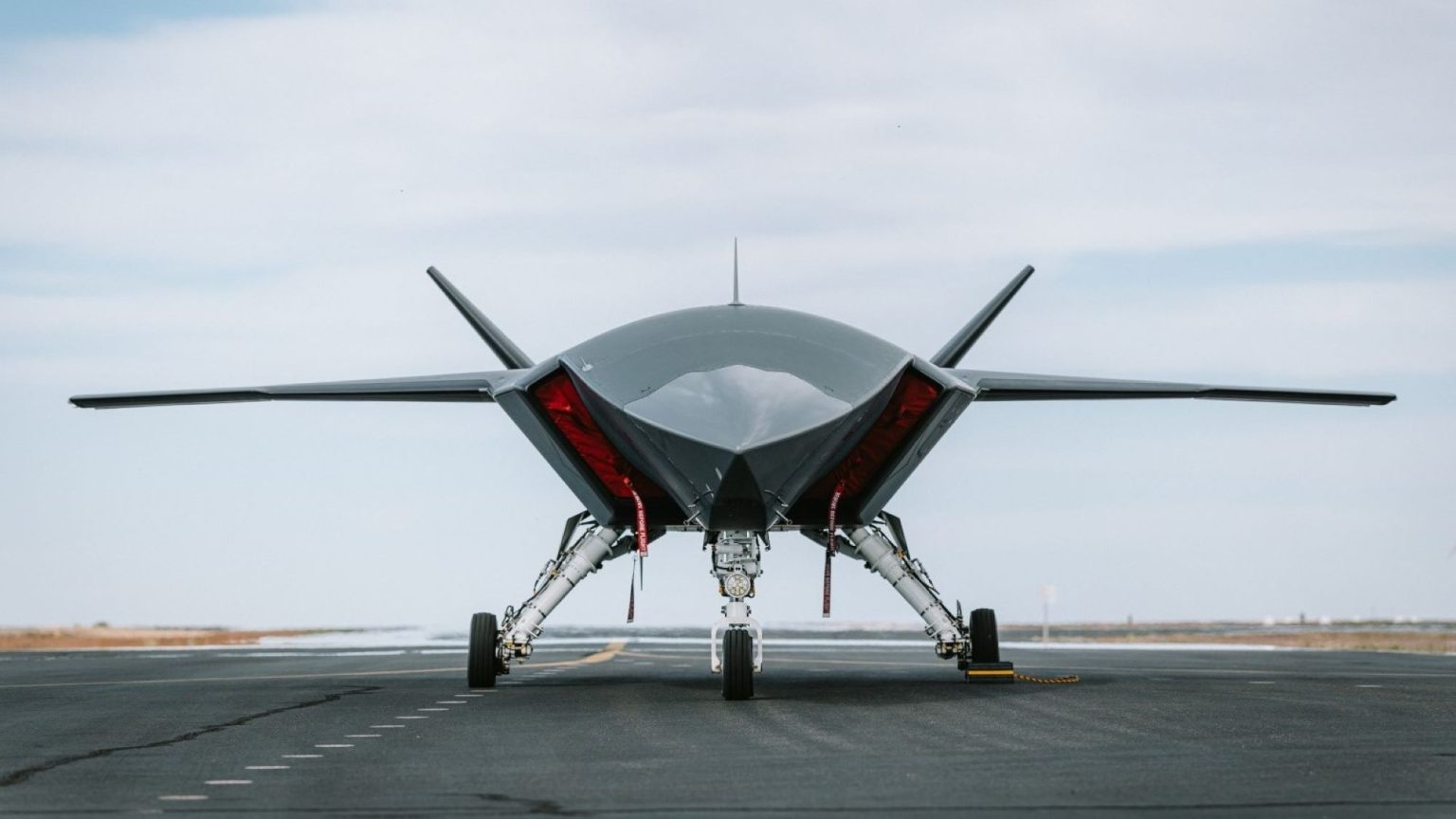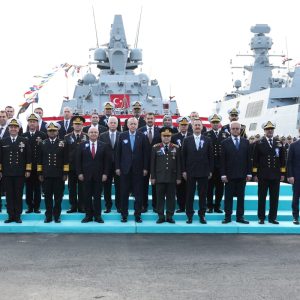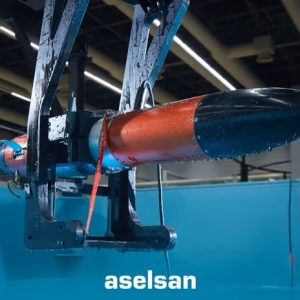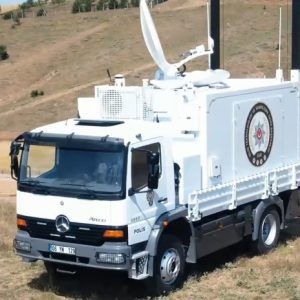Ghost Bat Proves Cooperative Capabilities
Australia’s Collaborative Combat Aircraft (CCA) program hit a key milestone. Boeing Defence Australia and the Royal Australian Air Force (RAAF) finished the MQ‑28A Ghost Bat Capability Demonstration 2025 ahead of schedule. As a result, they validated MQ‑28A Ghost Bat cooperative capabilities across several mission sets. Moreover, the early finish moves the platform closer to initial operational capability and a live air‑to‑air weapon shot later this year or in early 2026. [2][3]
Editor’s note: Featured visual should be imported from the source link provided and set as the post’s featured image. Use the above alt text and caption for accessibility and SEO.
Why it matters: The Ghost Bat is built to fly as an autonomous, attritable teammate next to crewed aircraft. In doing so, it extends sensing, complicates an adversary’s targeting, and adds distributed strike options at lower cost and risk to aircrew. Furthermore, validated MQ‑28A Ghost Bat cooperative capabilities—such as data fusion, multi‑ship coordination, and teaming with the E‑7A Wedgetail—lay the groundwork for a force mix that blends quantity with quality.
Key Facts
Schedule: Capability Demonstration 2025 missions concluded in early June—about four months early—after test events conducted between April and June. [2]
Tested mission sets: (1) autonomous behaviours and mission execution; (2) multi‑ship operations; (3) deployment ops at RAAF Base Tindal; (4) teaming with an E‑7A Wedgetail; (5) data fusion and dissemination to crewed platforms. [2][4]
Readiness metrics: Real MQ‑28 platforms surpass ~150 flight hours; digital twins log 20,000+ virtual hours. [2]
Next milestone: Air‑to‑air weapon employment test planned for late‑2025 or early‑2026. [2]
Block 2: In production with maintainability upgrades and new GPS/INS; Block 1’s modular nose bay (~1.5 m³) accepts ISR/radar/EW payloads, supporting rapid role changes. [2][5]
Ahead‑of‑schedule validation of cooperative mission threads
Boeing says the RAAF set mission threads that mirror real operations and push crewed‑uncrewed teaming. Across multiple sorties, the Ghost Bat showed MQ‑28A Ghost Bat cooperative capabilities like multi‑ship coordination for combat mass, on‑the‑loop autonomy for mission execution, and sensor data sharing with other assets. Consequently, completing these demonstrations ahead of schedule signals growing system maturity and a well‑practiced test team. [2]
From Tindal deployment to E‑7A teaming: a stepwise playbook
The 2025 campaign unfolded through linked events. First, during Exercise Carlsbad, the RAAF deployed the MQ‑28A to RAAF Base Tindal in the Northern Territory—the first operations outside the Woomera Training Area. This step rehearsed expeditionary set‑up, base logistics, and integration with resident F‑35A and MQ‑4C Triton units. Then, later trials showcased teaming with an E‑7A Wedgetail, where a single onboard operator controlled two Ghost Bats. Notably, this is a key human‑machine teaming concept for air battle management. [3][4][6]
Taken together, these steps form a clear playbook. Establish deployable operations. Next, scale to multi‑ship coordination. After that, integrate with the battlespace manager (E‑7A). Finally, close the kill chain by pushing fused tracks to crewed shooters. Thus, each stage increases the value of MQ‑28A Ghost Bat cooperative capabilities instead of standing alone as an isolated demo. [2][4]
What Block 2 signals for sustainment and role flexibility
Boeing confirms that Block 2 Ghost Bats are in production. They add maintenance‑friendly internal changes and a new GPS/INS—small but important updates for sortie generation and mission assurance. In addition, the aircraft’s modular nose volume (about 1.5 m³) accepts interchangeable payloads for ISR, radar surveillance, and EW/ELINT. Therefore, crews can switch roles quickly between sensing and strike support. For operators, this modularity is a hedge against uncertainty because one airframe can move across mission families as concepts of operation evolve. [2][5]
Operational implications: mass, survivability, and command philosophy
Operationally, the Ghost Bat aims to deliver attritable mass and distributed sensing that complicates an adversary’s targeting. By pairing MQ‑28A Ghost Bat cooperative capabilities with crewed shooters and airborne command nodes, the RAAF can extend sensor reach and push riskier tasks to uncrewed teammates. As a result, scarce high‑end fighters stay available for decisive engagements. Moreover, a single operator managing multiple aircraft from the E‑7A points to a command model that scales human oversight without flooding cockpit workload. [4][6]
For allies, these results feed the wider CCA push. The U.S. Air Force took a different path for its initial CCA awards; however, the Ghost Bat’s 150+ flight hours and extensive digital testing keep it relevant as a partner option and a live example of rapid, spiral development. The coming air‑to‑air shot will help define the platform’s place at the lethal end of the find‑fix‑track‑target chain. [2]
What to watch next
In the near term, watch for several signals of progress: the timing and outcome of the first air‑to‑air test; proof of multi‑ship operations beyond two aircraft; stronger cross‑domain data fusion with the F‑35A and MQ‑4C; and sustainment metrics from Block 2 aircraft in squadron‑level use. Together, these markers show how fast MQ‑28A Ghost Bat cooperative capabilities can move from demo to repeatable practice. [2][3][5]
Related analysis
For more on how autonomy is reshaping uncrewed systems, see our deep dive on AI and autonomy in drone operations. [1]
References
- Defence Agenda — AI in the drone industry
- Boeing Newsroom — Boeing & RAAF prove MQ‑28 operational effectiveness (Sep. 5, 2025)
- The Aviationist — Boeing and RAAF demonstrate MQ‑28A operational capabilities (Sep. 7, 2025)
- Boeing Australia — MQ‑28 teaming with E‑7A Wedgetail (Jun. 16, 2025)
- Defence Australia — Ghost Bat a flying success in Tindal (Jun. 24, 2025)
- Janes — Boeing completes MQ‑28 capability demonstrations (Sep. 8, 2025)











